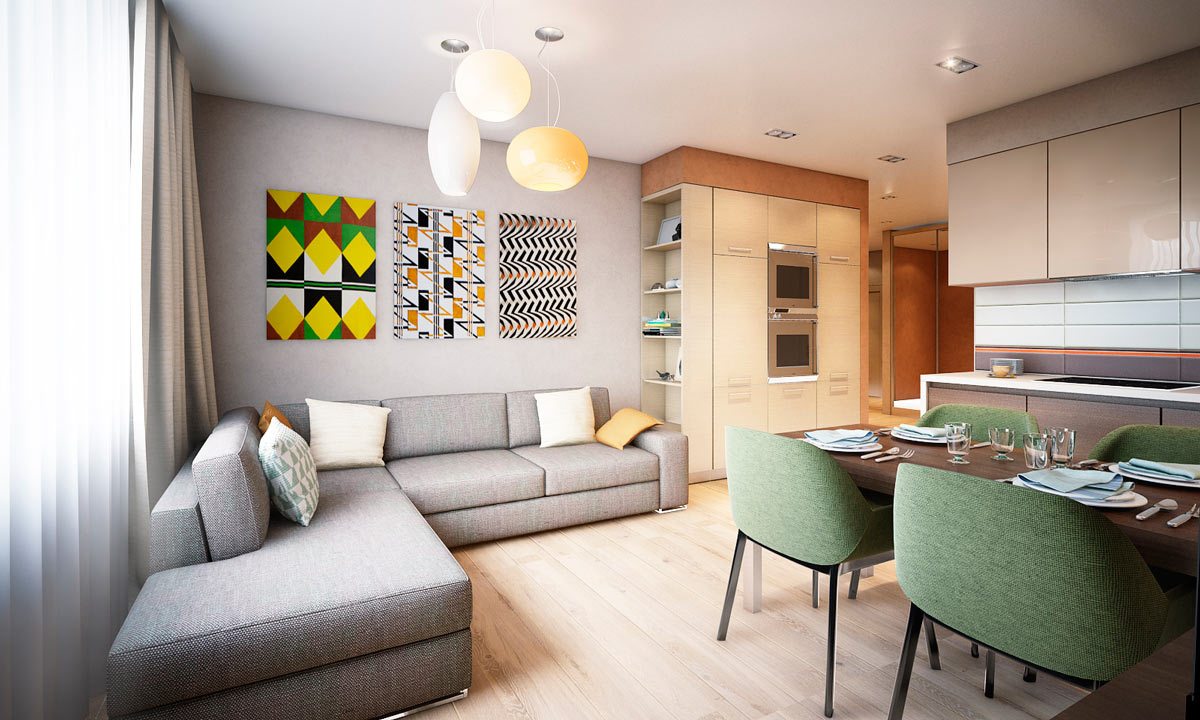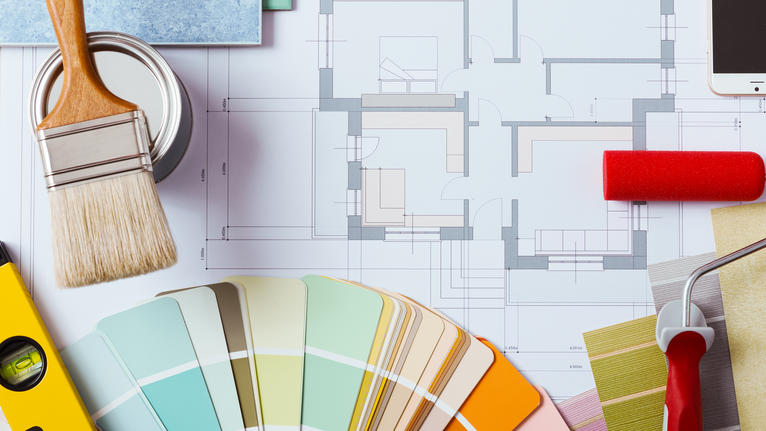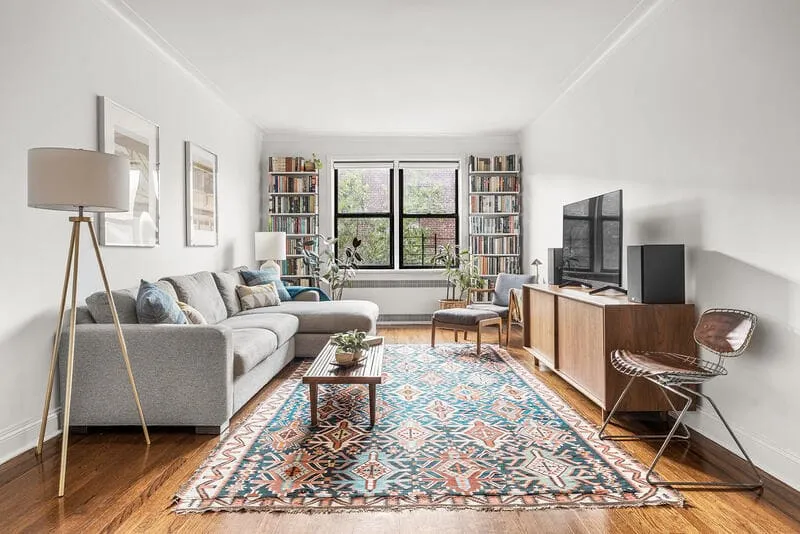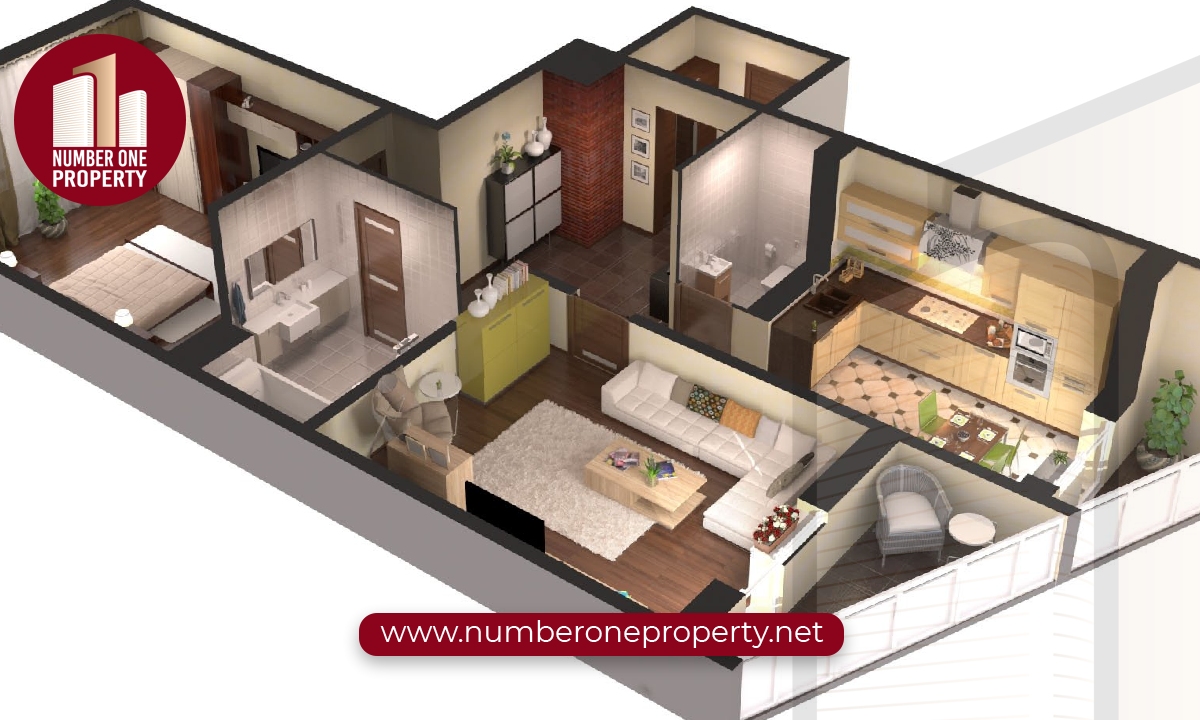In a rapidly evolving world, apartment design has become one of the fields that reflect social, technological, and cultural changes, as the need for living spaces that meet the diverse needs of residents increases, which imposes new challenges on designers and architects.
Hence, the importance of innovation and renewal in apartment design emerges, as everyone seeks to create comfortable and attractive environments that enhance the quality of life.
Modern trends are moving towards open spaces, the use of bold colors, and the adoption of sustainability principles, which allow designers to express their creativity and better meet the needs of users. In addition, modern technologies contribute to transforming apartments into smart spaces that enhance comfort and daily functions.
In this article, we will review the most prominent modern trends in apartment design, focusing on how to achieve a balance between beauty and function, and how design can reflect personal identity and enhance mental health.
Cultural trends in apartment design: global and local influences
Culture is one of the main factors that influence apartment design, as it reflects tastes, traditions, and societal values. Interior design is not limited to aesthetics only but also includes elements that express the cultural identity of individuals.
For example, the materials used, colors, furniture, and accessories can affect how people feel in the spaces they live in, and local arts and crafts play a major role in adding unique touches that reflect cultural heritage.
As for examples of designs inspired by different cultures, we find that Japanese design focuses on simplicity and balance, where natural colors and wood are used extensively to create a calm and comfortable environment. In contrast, Moroccan design is characterized by bright colors and intricate patterns, which add a warm and lively character to spaces. Scandinavian design relies on simplicity and functionality, whereas modern furniture is used with a focus on open space and natural lighting.
These examples illustrate how interior design can be influenced by different cultures, which contributes to creating spaces that express the identity of the residents and meet their needs.
The style of simplicity: simplicity and elegance in interior design

Minimalism or simple modernism is a popular trend in interior design, focusing on achieving a balance between beauty and functionality by reducing unnecessary elements and focusing on the essentials.
This style is based on key principles including simplicity, where clean shapes and straight lines are used to create a sense of calm and order, and neutral colors such as white and gray are preferred, with touches of natural colors to add vitality.
Simplicity is enhanced by reducing clutter, as it avoids excess decorations and unnecessary furniture, which facilitates movement and enhances the sense of space.
To apply the minimalism style in apartment design, furniture can be carefully chosen, such as multi-use pieces that save space. Natural lighting through large windows and light curtains is also preferable, which contributes to creating a comfortable and spacious atmosphere.
Organizing spaces using smart and hidden storage units helps reduce clutter, while simple touches such as indoor plants or artwork with a simple design can be added to bring life to the space without creating visual chaos.
Open Spaces: Enhancing Communication and Comfort
Open spaces are a modern trend in home design, as they contribute to enhancing communication and comfort among family members.
The benefits of open spaces in daily life
They are manifested in creating a comfortable and bright environment, as they allow the flow of natural light and provide a sense of spaciousness, which contributes to improving mood and increasing productivity. These designs also enhance social interaction, as family and friends can easily gather in common areas such as the living room and kitchen, which strengthens social bonds and enhances the spirit of cooperation.
How to achieve a balance between privacy and openness
Designing open spaces requires thinking about how to provide the necessary privacy without sacrificing openness. This can be achieved by using adjustable partitions, such as glass walls or smart furniture, which allow the creation of private areas when needed.
Different colors and designs can also be used to define spaces within the open space, creating a sense of privacy without completely closing the space. Thus, these strategies contribute to achieving an ideal balance between openness and privacy, which enhances the quality of daily life.
Using bold colors: The effect of colors on mood and design

Colors play a major role in influencing mood and emotions, as they can evoke different feelings in individuals. For example, red is a symbol of energy and enthusiasm, while blue expresses calm and stability.
Color science is used in interior design to achieve certain effects. Bold colors can add vitality to spaces and create an atmosphere of inspiration and activity. It is important to understand how colors affect the human psyche and choose them carefully to suit the space's purpose.
Bold colors can be incorporated into interior design in several innovative ways. One way is to use colors as the main background, such as painting one wall in a bold color to be an attractive point in the room.
Colorful furniture or accessories such as pillows and carpets can also be used to add a touch of vitality without having to change the basic colors of the room.
In addition, bold colors can be incorporated through artwork or distinctive walls that reflect the character of the place. These methods help create a balance between boldness and elegance, making the space more attractive and vibrant.
Sustainability in Apartment Design: Eco-Friendly Materials and Modern Technologies
Sustainability in apartment design is a fundamental issue that is gaining increasing importance in our current era, as the world faces pressing environmental challenges such as climate change, resource scarcity, and pollution.
Engineers and architects seek to develop housing solutions that contribute to reducing the environmental impact and enhancing the quality of life, as a balance can be achieved between housing needs and environmental conservation requirements by adopting sustainability principles, which contribute to creating healthy and sustainable communities for future generations.
Many materials and techniques can be used in the design of sustainable apartments, as we find wood certified from sustainable sources among the environmentally friendly materials, which is characterized by durability and renewable.
Insulating materials such as rock wool or fiberglass also contribute to improving energy efficiency within buildings, as for modern technologies, solar energy systems provide a renewable energy source, while water recycling systems reduce fresh water consumption.
In addition, intelligent energy control systems can be used to enhance efficiency and reduce waste.
These elements combined contribute to the design of apartments that reflect a commitment to sustainability and effectively meet the needs of residents.
Smart Apartment Design: Integrating Technology into Everyday Life
Smart devices are an essential part of modern apartment design, contributing to improving the comfort and well-being of residents. These devices provide remote control over various aspects of the home, such as lighting, heating, and air conditioning, allowing users to adjust the living environment according to their personal preferences.
In addition, smart devices such as voice assistants can facilitate daily life by organizing tasks and providing information instantly.
In addition, smart security systems enhance residents’ sense of security, making smart apartments an ideal choice for families and individuals seeking the ultimate comfort and safety.
The future of smart apartment design is moving towards greater integration between technology and the surrounding environment. As technological innovations advance, it will become possible to integrate artificial intelligence and the Internet of Things more effectively into home design.
Smart apartments will be able to learn from users’ behaviors and automatically adapt the indoor environment to meet their needs. Modern technologies will also enhance energy efficiency, contributing to reducing bills and achieving sustainability.
The future design of smart apartments will not only focus on comfort but will also seek to provide an integrated residential experience that combines luxury and environmental efficiency, reflecting the aspirations of future generations toward a smarter and more sustainable life.
Versatile Furniture: Saving Space and Enhancing Functionality
Versatile furniture is an ideal choice for small spaces, providing a practical and effective solution to meet the needs of residents. Common types of versatile furniture include sofas that can be converted into beds, extendable tables, and storage chairs. Other options include shelves that can be used as room dividers, and cabinets that contain multiple storage spaces.
These types of furniture help improve the utilization of available space, making them ideal for small apartments or homes with an open design.
When choosing furniture suitable for small spaces, several factors must be taken into account to ensure that the available space is maximized:
First: It is preferable to choose furniture pieces with simple and modern designs, as clean lines and light colors help create a sense of spaciousness.
Second: It is important to measure the space accurately before purchasing to ensure that the furniture fits the room.
Third: It is recommended to look for multi-functional furniture pieces, such as tables with drawers or sofas with internal storage space.
Finally: Consider the possibility of moving furniture easily, which allows the space to be reorganized as needed. By following these tips, you can achieve an ideal balance between beauty and function in the design of small spaces.
Natural lighting: How to use light to improve design
Natural lighting is one of the most prominent elements of interior design that positively affects the quality of life. It not only contributes to reducing reliance on artificial lighting but also plays an important role in improving mental and physical health and enhancing mood and productivity.
Natural lighting regulates the body's biological clock, which improves sleep quality and reduces feelings of stress. Sunlight also helps boost the production of vitamin D, which is essential for bone health and immunity.
Psychologically, natural lighting reduces stress and depression, which creates a sense of comfort and balance.
Windows can be designed in large sizes and light-reflective glass can be used to ensure increased benefit from natural lighting. In addition, it is recommended to arrange furniture in a way that allows as much light as possible to enter. Light colors can also be used for walls and ceilings to better distribute light inside rooms.
Personal decor: How to express identity through design

Personalized decor is an effective way to express individual identity and add a special character to interior spaces. When interior design reflects the personality and interests of the residents, it becomes more than just a living space, but rather an environment that stimulates creativity and enhances a sense of belonging and comfort.
Self-expression in interior design adds emotional value to the place and makes it more in harmony with the needs and desires of individuals. It also helps create an atmosphere that expresses personal taste and special memories, making every corner of the home full of life and meaning.
Integrating identity into design can be achieved by using family photos and special memories as part of the decor, and choosing furniture pieces that reflect lifestyle and personal preferences. In addition, favorite colors, handmade art pieces, or hobbies such as plants or books can be incorporated into the design of the rooms, creating a space that reflects the identity of its residents.
Conclusion
Modern trends focus on using sustainable materials, enhancing energy efficiency, and taking advantage of smart solutions that facilitate daily life and improve the residential experience.
Flexible design that caters to the needs of different generations is expected to become the norm, while smart technologies such as lighting, ventilation, and energy control systems will play a major role in improving the efficiency of apartments.
Sustainable innovation will also become a key element in ensuring a better future with the increasing concern for environmental issues, as adopting environmentally friendly solutions in design helps reduce the negative impact on the planet and improve the quality of life of residents by creating a healthy and sustainable environment.
The future of apartment design is not limited to aesthetic aspects only but extends to include a greater role in building sustainable and advanced communities.
Read Also:
The Future of Smart Homes: Top Features Buyers Are Looking For in 2024


